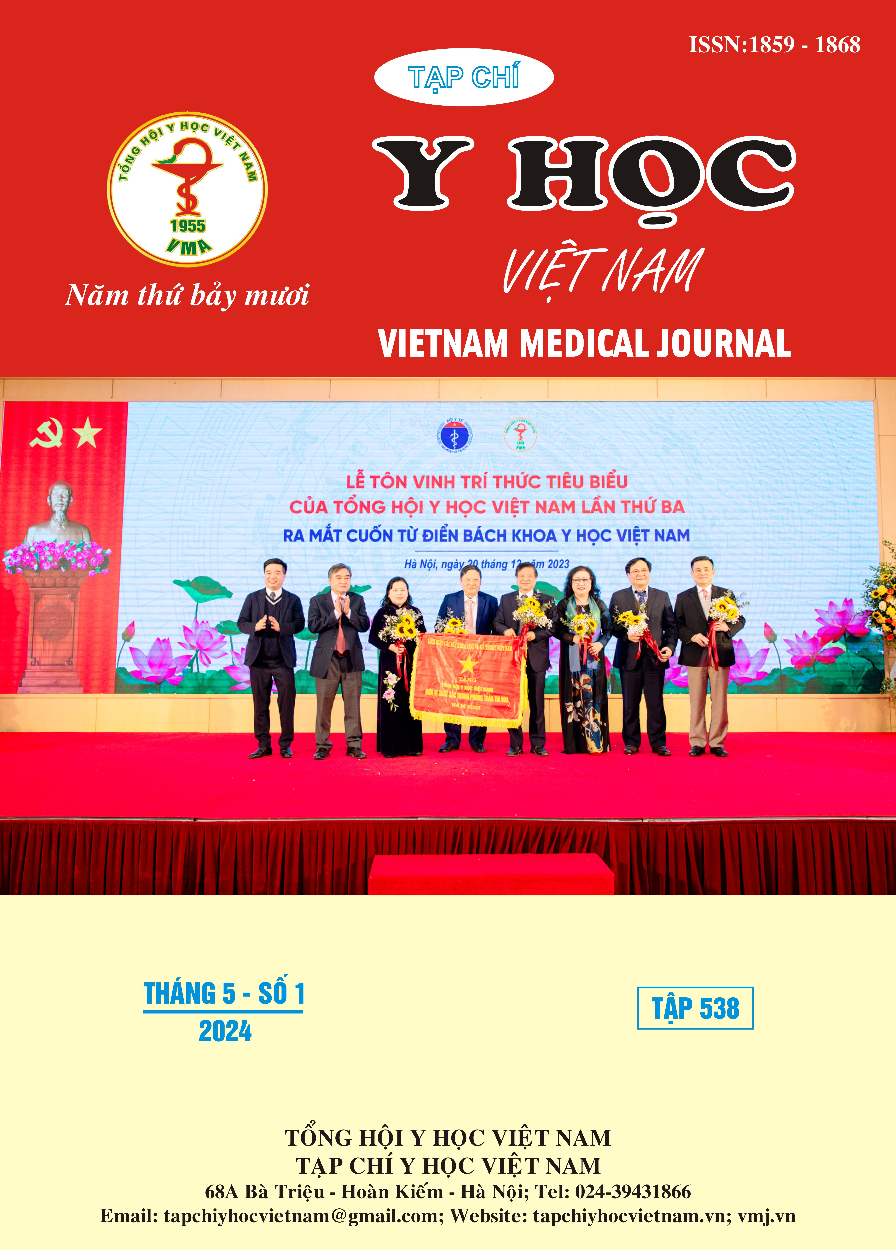STATUS OF COMPLIANCE WITH FOOD SAFETY REGULATIONS AT SCHOOL COLLECTIVE KITCHEN IN DI AN CITY, BINH DUONG PROVINCE IN 2023
Main Article Content
Abstract
Background: Applying and evaluating well knowledge and practices in food processing at school collective kitchens is essential to minimize food-borne illnesses in students. Objectives: This study aims to determine the proportion of school collective kitchens that comply with food safety and hygiene regulations, and to evaluate the food safety knowledge and practices of food handlers at schools in Di An city, Binh Duong province. Subjects and Methods: A cross-sectional study was conducted at all 26 school kitchens (except preschools) that organized on-site cooking in Di An city, Binh Duong province. All food processing samples are taken. The data collection tool included a structured questionnaire with 32 questions covering socio-demographic characteristics, knowledge, and practices related to food safety for handlers, and 26-question questionnaire to evaluate collective kitchens. The questionnaire was answered by 331 food handlers. Data entry was with Epidata 3.0 and data analysis was performed using STATA 14.1 software. Results: The rate of kitchen fully complying with food safety and hygiene regulations reached 92.3%. Most participants were female (93.05%, n = 308), between 36 and 55 years old (66.47%, n = 220), education level less than high school (51.96%%, n = 172), the majority had worked in the food service sector for 1 to 5 years (43.20%, n = 143). The rate of correct general knowledge reached 79.15%, the rate of correct general practice reached 93.05%. Conclusion: It is necessary to strengthen compliance with food hygiene and safety regulations at school BATTs. In addition, training to improve the knowledge and practice of processors also needs to be focused and carried out regularly.
Article Details
Keywords
Collective kitchen, school, knowledge, practice, food safety, Di An, Binh Duong.
References
2. Huỳnh Tấn Cúc (2014) "Tỷ lệ bếp ăn tập thể đạt chuẩn điều kiện an toàn thực phẩm và các yếu tố liên quan tại các khu công nghiệp trên địa bàn tỉnh Bình Dương năm 2013". Tạp chí Y học thành phố Hồ Chí Minh, 18 (6), tr. 271 - 276.
3. Nguyễn Thị Mười, Lê Thị Ngọc Ánh., Lê Vinh (2016) "Tỷ lệ bếp ăn tập thể - căn tin trường học tại quận 5, tp. Hồ Chí Minh đạt điều kiện an toàn thực phẩm, năm 2015". Tạp chí Y học thành phố Hồ Chí Minh, 20 (5), tr. 322 - 331.
4. Nguyễn Văn Nêu (2014) "Kiến thức – thực hành vệ sinh an toàn thực phẩm của nhân viên chế biến thực phẩm các bếp ăn tập thể tại thành phố Bến Tre năm 2013". Tạp chí Y học thành phố Hồ Chí Minh, 18 (6), tr. 565 - 570.
5. Phạm. Thị. Chung, Phạm Duy Tường (2020) "Kiến thức, thực hành về an toàn thực phẩm và một số yếu tố liên quan của người chế biến tại bếp ăn các trường tiểu học quận Cầu Giấy Hà Nội năm 2019". Y học cộng đồng, 59 (6), tr. 182 - 187.
6. Thị Thu Hà N, Bảo Ngọc T, Ngọc Tụ T (2021) "Kiến thức, thực hành về vệ sinh an toàn thực phẩm của người chế biến thực phẩm tại bếp ăn tập thể một số bệnh viện tại Hà Nội năm 2020". Tạp Chí Y học Việt Nam, 501 (1)


